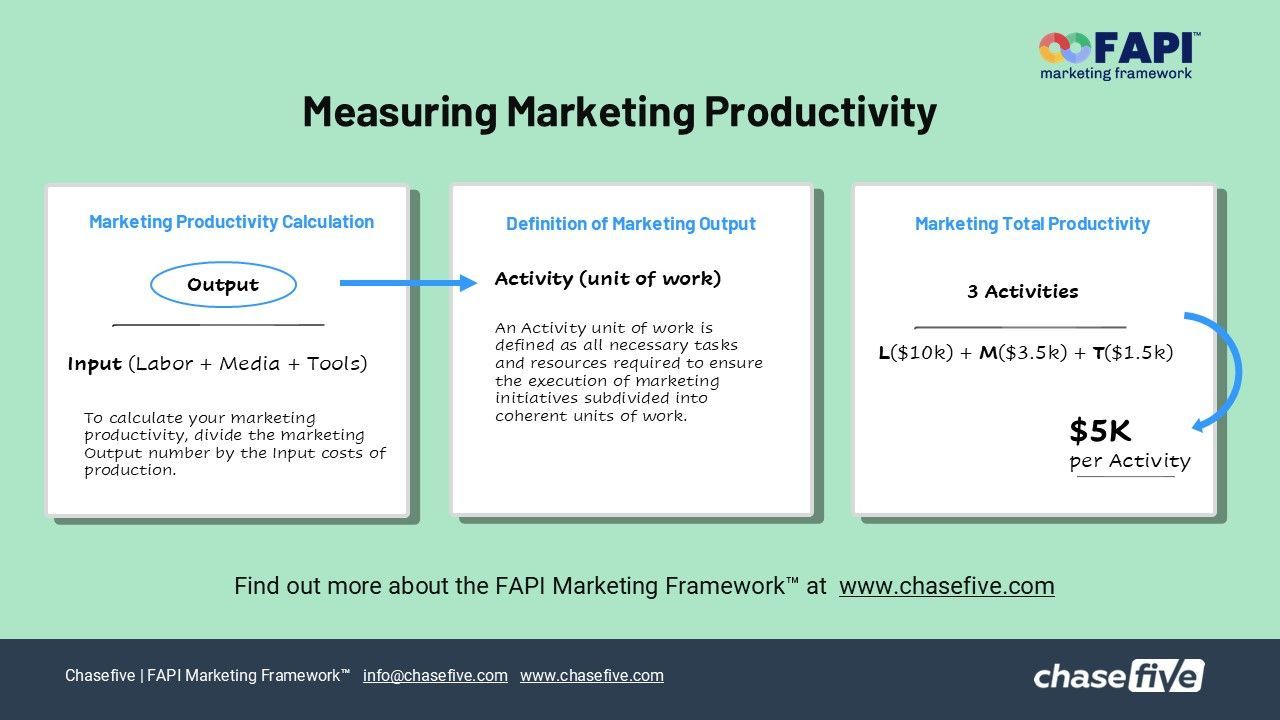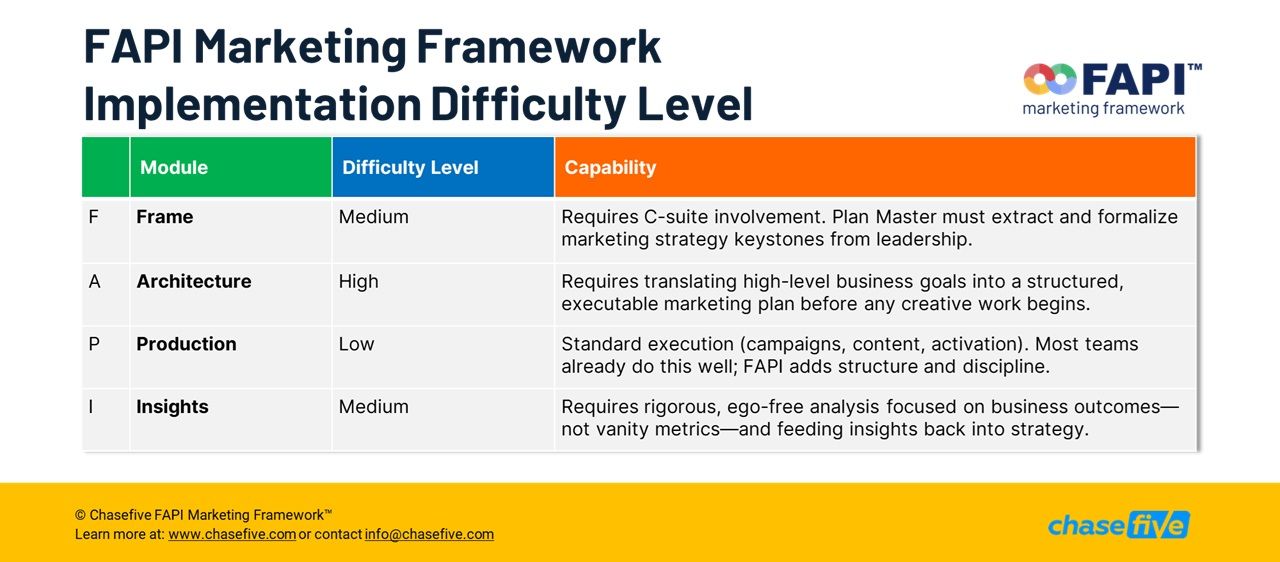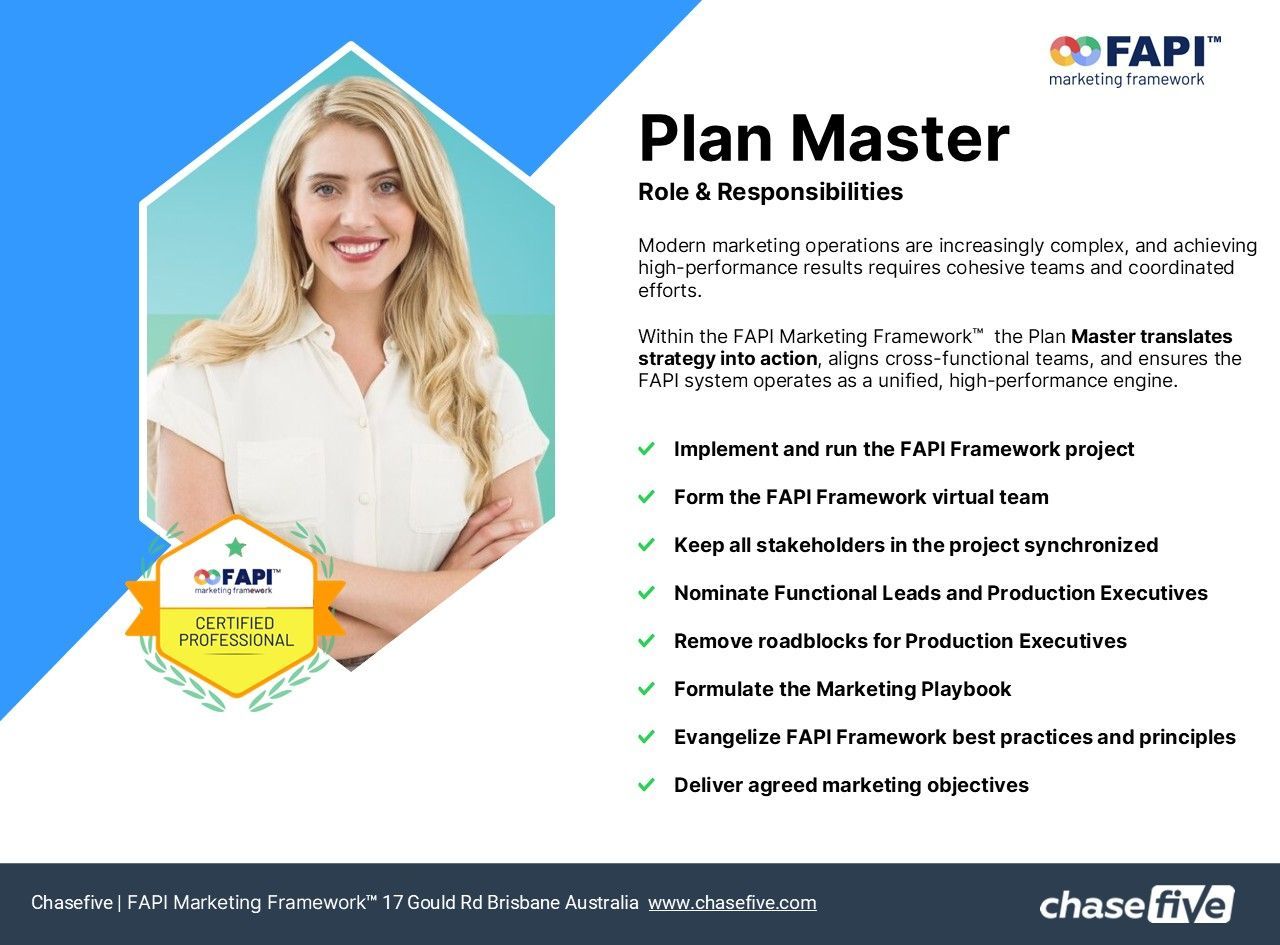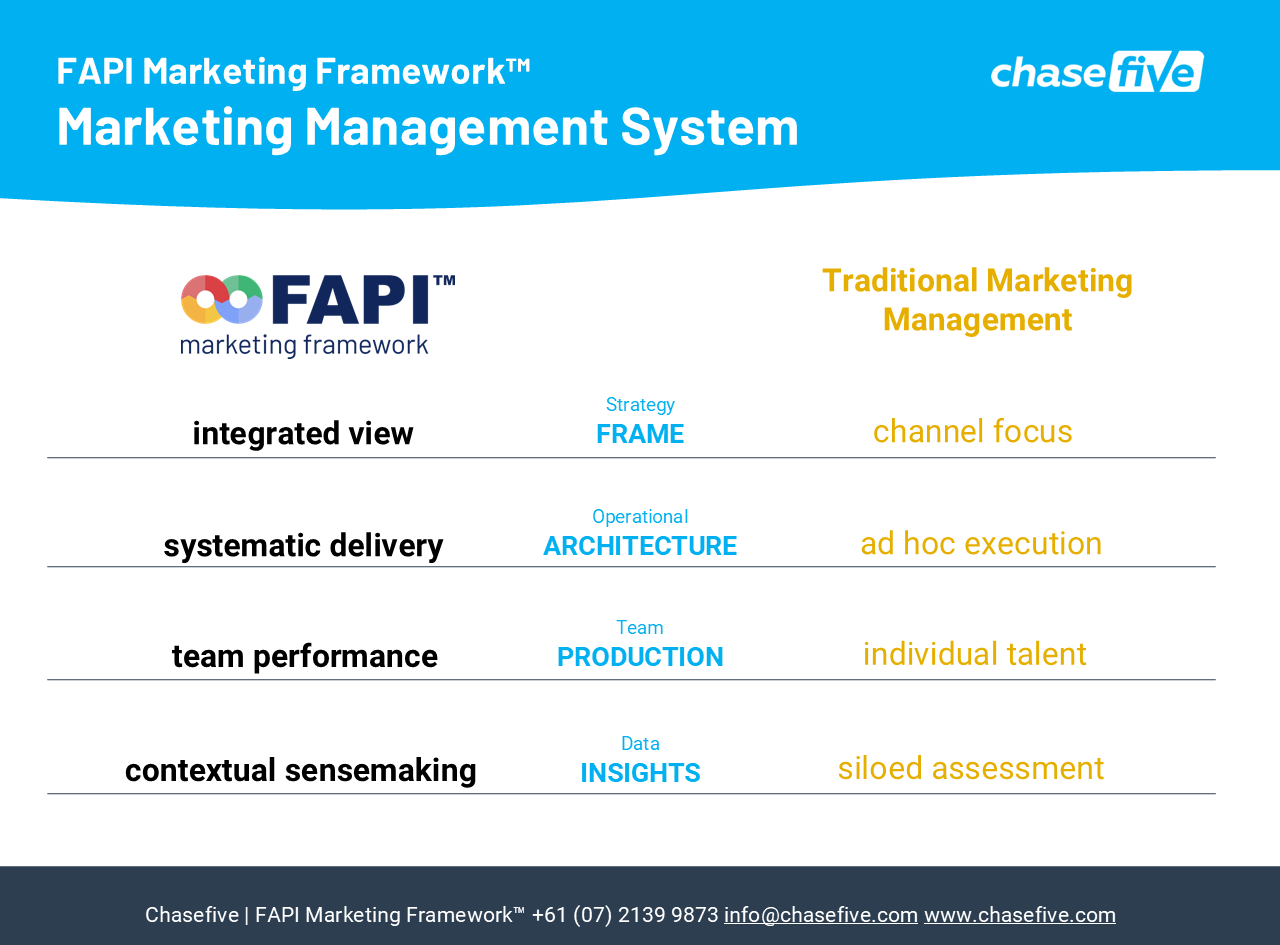Measuring marketing productivity in the age of AI
With the surge of AI and its revolutionary impact on marketing, businesses are increasingly interested in how AI influences marketing productivity. To answer this question, it is essential first to understand how marketing productivity is calculated.
According to the FAPI Marketing Framework, marketing productivity is determined by dividing the marketing output by the production input costs. The input costs of production consist of the combined expenses for Labor (L), Media (M), and Tools (T) as illustrated in the diagram below.

The production input costs consist of the combined expenses for Labor (L), Media (M), and Tools (T).
Labor (L) refers to all costs associated with salaries and wages in the marketing function. This includes salaries for in-house marketing staff and payments made to freelancers, agencies, and contractors who are hired for specific projects. The category also covers investments in training and development aimed at enhancing the skills of the marketing team.
Media (M) involves costs related to paid advertising, including digital paid media in all its forms. Traditional advertising also figures heavily in this category, covering costs for print ads, television and radio spots, out-of-home advertising, and direct mail campaigns. Sponsorship payments to support various events or organizations are also part of the media costs, as they help increase brand visibility. Moreover, while some content creation costs might be classified under Labor, media spending incorporates expenses related to content distribution and promotion, such as paid content syndication or social media boosting.
Tools (T) contains the expenses for various marketing-related software and platforms. This includes subscription fees for marketing automation tools, CRM systems, and analytics platforms. Additionally, it covers costs associated with website development, including design, hosting, and maintenance. It also includes costs for creative tools like design software and stock resources. Market research expenses, such as those for research platforms and survey tools, fall under this category as well. Finally, Tools costs account for essential office supplies such as computers, printers, and other equipment used by the marketing team.
Defining marketing Output
Now that we have defined the marketing productivity formula, this raises the critical question: What is considered 'Output' in marketing?
The FAPI Marketing Framework defines an 'Activity' as the core marketing output. An Activity is a unit of work that includes all the necessary tasks and resources required to execute marketing initiatives, subdivided into coherent, manageable components.
Therefore when calculating marketing productivity, if the input costs for Labor, Media, and Tools (L, M, T) amount to $15,000, and the recorded output is the completion of 3 Activities, the resulting productivity cost is $5,000 per Activity. By applying the same logic, it is possible to calculate the productivity rate of individual Activity types over time or assess the impact of specific resource lines through time-series analysis.
It is important to note that a marketing activity is not the same as a marketing campaign; rather, a campaign can encompass multiple activities. This distinction is explored in greater detail in the FAPI Marketing Framework Coursebook.
When evaluating the impact of AI on productivity costs, it is essential to allocate AI expenses to the corresponding Labor (L), Media (M), and Tools (T) cost categories, depending on the nature and application of the AI solution implemented.
Understanding marketing productivity and AI's impact on efficiency is critical for businesses of all sizes. Find out more about the FAPI Marketing Framework Academy at www.chasefive.com







